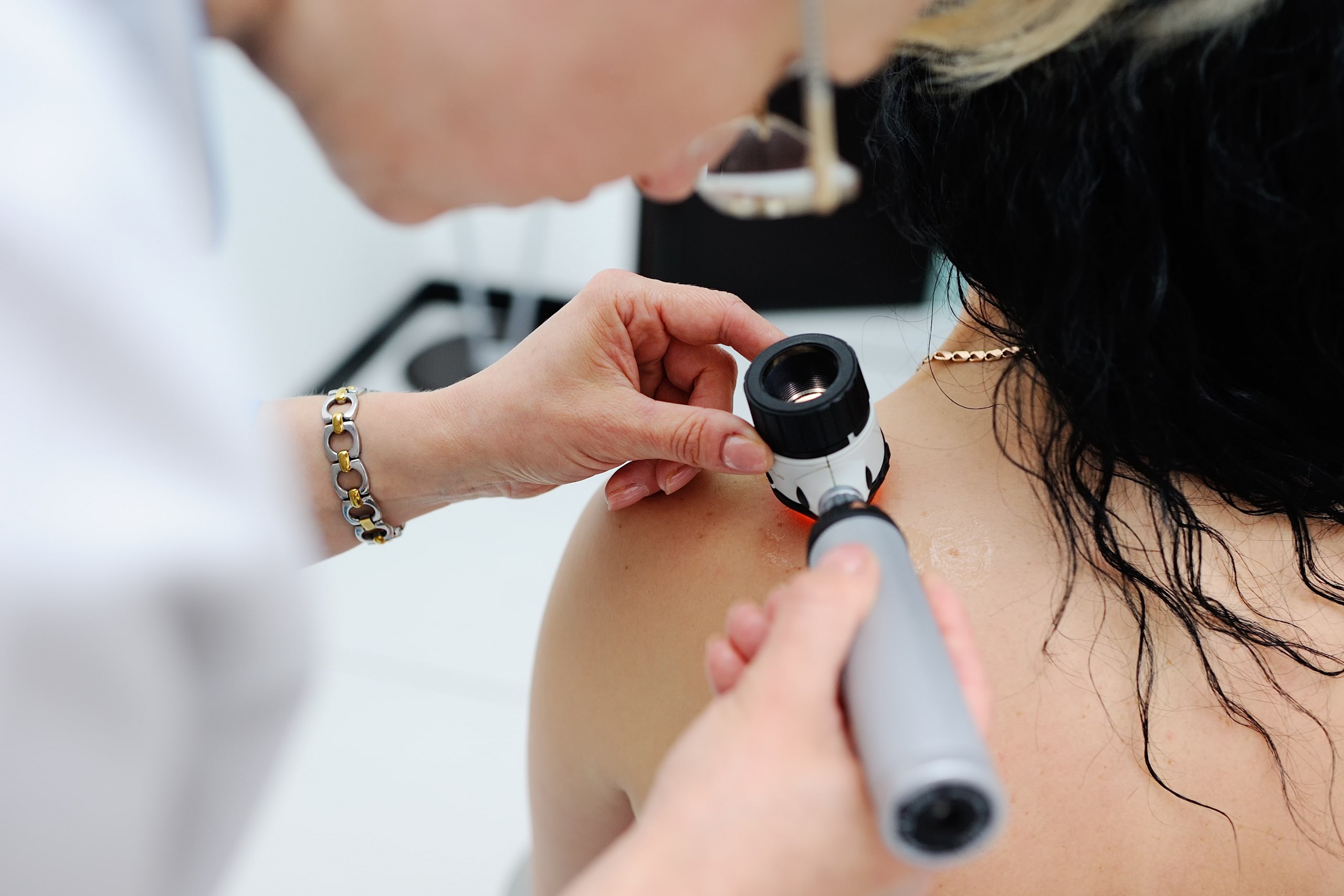With longer days and warmer weather, summer is a time to enjoy the outdoors. From backyard barbeques to a day at the lake, summer is the ideal season for outdoor activities.
Summer is also when UV intensity is at its peak, and those days spent outside in the sun can be harmful to your skin if you lack proper protection. The sun gives off ultraviolet (UV) light, which is the leading cause of skin cancer. Too much exposure to the sun can increase your chances of developing one or more types of skin cancer.
The Three Types of Skin Cancer
- Basal cell carcinoma – Most common and least likely to spread
-
-
- Symptoms and signs: Raised pink bumps that can bleed easily after an injury
-
-
- Squamous cell carcinoma – Develops on areas of the skin that are subject to frequent sun exposure
-
-
- Symptoms and signs: Scaly, raised patches that are often red in color
-
-
- Melanoma – Least common but high potential to spread rapidly
-
-
- Symptoms and signs: Asymmetrical, black and brown growth on the skin
-
-
Tips for Skin Cancer Prevention
- Use sunscreen daily year-round. Whether you are planning to be outside for several hours or making a quick run to the store, it is recommended that you put on a broad spectrum sunscreen of SPF 15 or higher. Always reapply every two hours after swimming, sweating or working out in the sun.
- Stick to the shade whenever possible. Seek shelter from the sun under an umbrella, awning or tree as much as you can. The shade will minimize sun exposure and reduce your risk of developing skin cancer.
- Wear protective clothing and hats. Obviously, the less skin exposed to the sun the better but wearing a long-sleeved shirt and pants might not always be the most practical in warmer weather. Clothes made with tightly woven fabric and hats with a brim all the way around offer the best UV protection.
- Protect your eyes with UV-resistant sunglasses. The skin around your eyes is tender and susceptible to sun damage. Wearing sunglasses that block UVA and UVB rays is the best form of protection for your eyes and reduces the risk of cataracts.
At What Time of Day Is the Sun Most Dangerous?
According to the Centers for Disease Control and Prevention (CDC), the sun’s harsh UV rays tend to be strongest between 10 a.m. to 4 p.m. Daylight Saving Time (DST). Come rain or shine, UV rays are an invisible form of radiation that can damage your skin by reflecting off surfaces like cement, sand, water and snow.
Even on a cloudy day, it is important to check the UV Index and take preventative measures to shield your skin from the sun.
What Else Emits Harmful UV Rays?
Ultraviolet radiation is sneaky and invisible to the human eye. While exposure to UV rays most commonly comes from natural sunlight, you can also be exposed to it by using indoor tanning devices like tanning beds and booths and sun lamps. It is best to avoid all UV tanning devices to reduce your risk of skin cancer.
What Are the Early Signs of Skin Cancer?
The good news is that most skin cancers develop in areas you can see, so it is often easy to catch them early. The key to early detection is to regularly examine your skin, especially the more commonly exposed areas like your face, neck, arms and legs. If you notice an unfamiliar bump or sore that does not go away or changes into a mole, schedule an appointment with your doctor or dermatologist.
Abnormal growths on the skin may not always mean cancer, which is why you should strongly consider visiting a doctor or skin cancer specialist to receive a proper diagnosis.
Find Advanced Skin Cancer Treatment in Southwestern Oregon
If your doctor or dermatologist has recently diagnosed you with skin cancer, our team of oncologists can guide you through a personalized treatment plan. Roseburg’s Community Cancer Center provides thorough and innovative cancer treatments at all stages.
To schedule a skin cancer consultation, call 541-673-2267 (ext. 5100) or send us a message.
